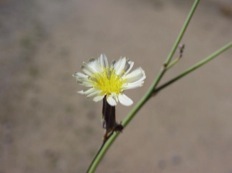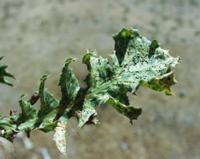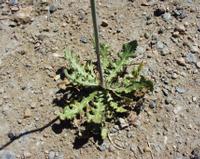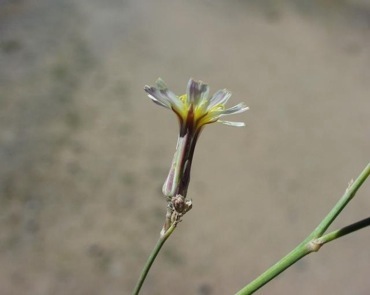Launaea intybacea: Edible Bitter Lettuce
The plant came first, and it’s anybody’s guess to what its scientific name is.
Every botanical wonderkin thinks his powers of observation and classification are the best and so plants get renamed and shuffled around and the potherb debate rages on. I started out with Launea Intybacea and Launaea intybacea then Brachyrhampus intybaceaus. That lead to
Cicerbita intybacea and Lactuca intybacea, which made some sense as it is called wild lettuce in
English but it really isn’t a lettuce and there are several wild lettuce already. Lastly there is the Spanish name Achicoria Azul, which means Blue Chicory. Unfortunately the plant has yellow blossoms, though sometimes white. So, taking a hint from its relatives, I’ll go with the original and for a common term call it Bitter Lettuce.
A native of Africa, the Bitter Lettuce has been introduced to Florida, Texas, Mexico, the West Indies, Central America, South America, Oman and the Old World. Edible or not, it is often listed as an invasive weed. It is very adapted to dry conditions. It starts out as a rosette
then sends up a leafy flowing stalk. After it seeds it develops new growth from the base of the stem and or root and can take on a bushy appearance. The plant can keep producing new rosettes and can send up new shoots from the root for several years.
Don’t be surprised if you have to boil leaves 40 minutes or so in a lot of water to make it edible.
As for the name, Launaea intybacea — I had to pick one — it is said law-NEE-ah in-ti-BAY-see-ah. (With thanks to Latin expert Peter Ommundsen for this and other help.) Launaea probably honors French botanist Jean Claude Michel Mordant de Launay (c.1750-1816). Intybacea is Dean Latin for endive/chicory. That came from Egyptian “tybi” (January), referring to the month Endive was customarily eaten
Green Deane’s “Itemized” Plant Profile
IDENTIFICATION:
Annual herb one to five feet tall, succulent branching stems and milky juice. Leaves four to 12 inches long, in a basal rosette and alternating on the stem, lettuce green, lobed, toothed with soft, red-tipped spines on the edges. Flowers yellow, sometimes white, in erect heads in branched clusters. Seeds 1/8 inch wide, ribbed, spiny
TIME OF YEAR:
Flowers year round
ENVIRONMENT:
Roadsides, coastal strands, agricultural lands
METHOD OF PREPARATION:
Occasionally used as food. Young plants and young leaves palatable when cooked as greens. Does not taste good raw.






I found a plant at Wall Springs Park in Pinellas County, FL, that looks like Chicory- blue flowers , with stem leaves sessile, and long bracts, about three feet tall. Since “Florida Guide to Vascular Plants of Florida” notes Hillsborough County (across the bay) having it, can it be the real thing?
This time of year it might also be Lactuca floridana or Lactuca graminifolia
I read it was good for minor pain. Is this true.
It is extremely over-rated, more a drug culture wives tale than anything else.